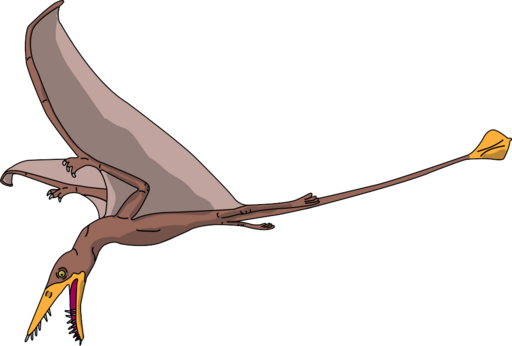The Early Pterosaur
Rhamphorhynchus was a fascinating pterosaur that lived during the Late Jurassic period, approximately 150 million years ago.

| Meaning | Beak snout [Rhampho-rhynchus] |
| Pronunciation | RAM-foh-RINK-us |
| When: | Late Jurassic (about 150 million years ago) |
| Where: | Europe (Germany) |
| What: | Pterosaur (flying reptile) |
| Weight: | Estimated around 1–2 kg (2.2–4.4 pounds) |
| Length: | Approximately 1.8 meters (6 feet) wingspan |
| Diet: | Piscivorous (ate fish) |
| Discovered: | First described by Georg August Goldfuss in 1831 |
It was one of the earliest and most well-known pterosaurs, characterized by its long tail and impressive wingspan.
The name “Rhamphorhynchus” means “beak snout,” describing its elongated jaws filled with sharp teeth.
Rhamphorhynchus had a wingspan ranging from 1.2 to 2 meters (4 to 6.5 feet) and a body length of about 0.5 to 1 meter (1.6 to 3.3 feet).
Its body was lightweight and covered in fur-like fibers called pycnofibers, which likely helped regulate its body temperature and provided some aerodynamic benefits during flight. Its wings were supported by an elongated fourth finger, typical of all pterosaurs.
The most striking feature of Rhamphorhynchus was its long tail, which could reach up to twice the length of its body. The tail ended in a diamond-shaped flap of skin called a vane, which may have helped stabilize its flight or acted as a rudder for steering.
Rhamphorhynchus had a relatively short neck and a pointed skull with a sharp beak, indicating its specialization for catching fish and possibly other small prey.
Fossils of Rhamphorhynchus have been found in Europe, particularly in Germany and England, in limestone deposits known for preserving fossils from the Jurassic period. Rhamphorhynchus is believed to have been well-adapted for aerial hunting, using its sharp teeth to capture fish while in flight.
